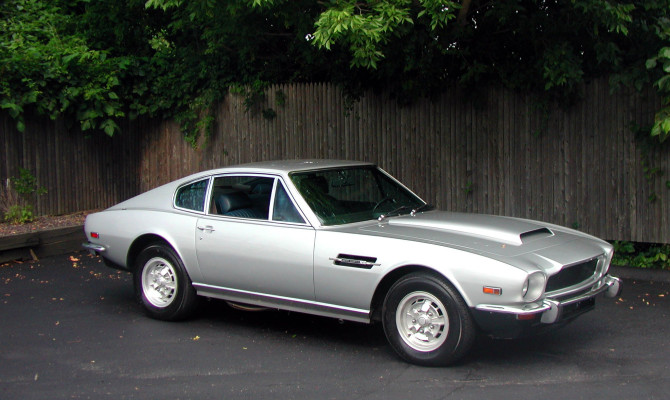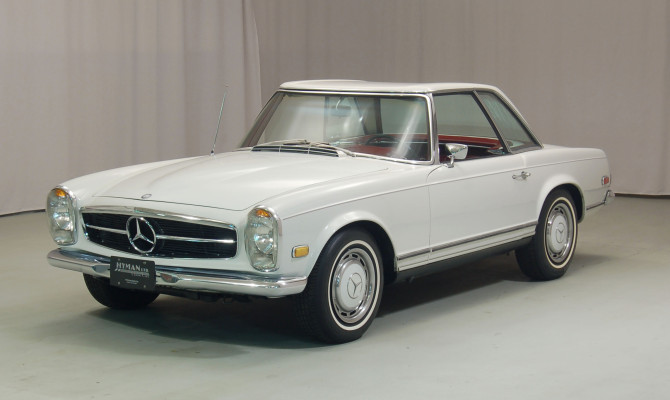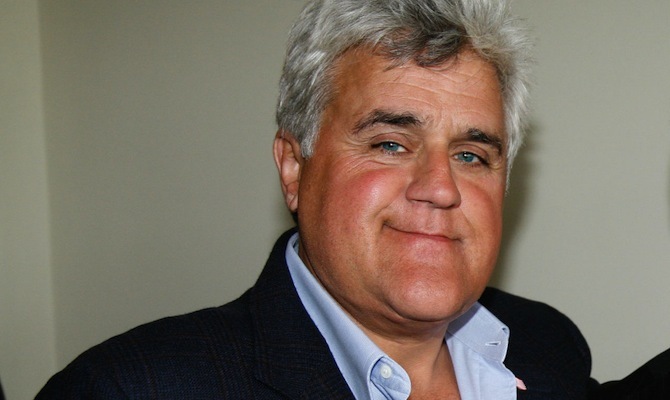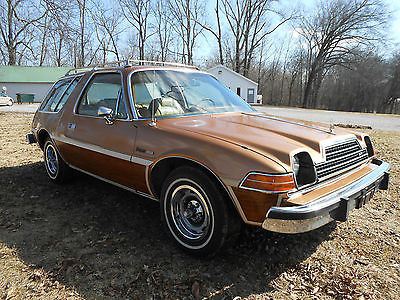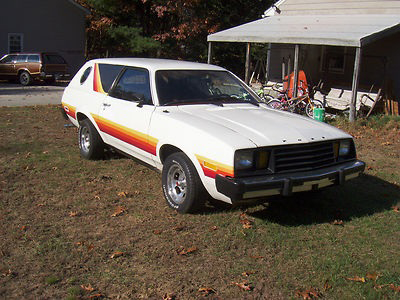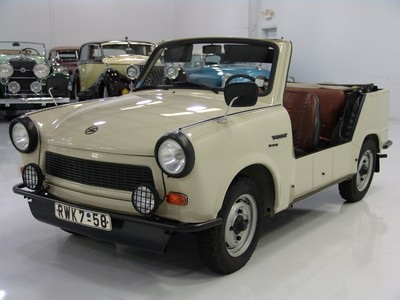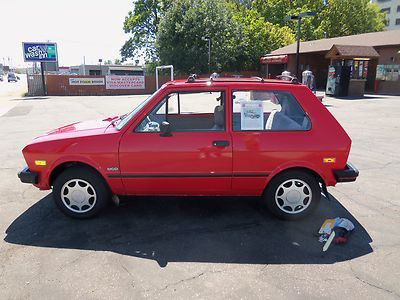Like the Dow, the classic car market woke up from its recession-induced hibernation around 2011-12.
But five years ago, it was a different story. If you had picked up a few of the following cars then, you’d likely be sitting on a tidier return than your 401K, and you’d have had a pretty good time driving to the bank. (All prices are in US dollars)
1976-79 Pontiac Trans Am: Whether it’s Gen-Xers’ fond memories of Burt Reynolds in “Smokey and the Bandit” or even Norm McDonald’s hilarious take on him in the “Celebrity Jeopardy” sketch on “Saturday Night Live,” Bandit-era black and gold T/As are smoking hot. A nice Pontiac Trans AM five years ago might have set you back in the high 20s; now it’s the high 30s.
1976-79 Porsche 911 Carrera Turbo: The 911 Turbo stuck a big middle finger up at the Malaise Era. When other cars were suffering from emission-control strangulation and low horsepower, the 911Turbo sucked the doors off everything you could buy new and most 1960s muscle as well. Inexplicably cheap for years, they’ve taken a massive jump, a gain of nearly $100,000 in the last five years. Name a stock with that kind of return.
1977-79 Aston Martin V8 Vantage: For years these cars were pooh-poohed as “British Mustangs” and they lived in the shadow of the DB5, the Aston that Sean Connery made famous as 007. But the next generation of collectors has evidently taken quite a shine to them. A V8 Vantage that might have cost under $70,000 five years ago will now set you back closer to $150,000.
1988-91 BMW M3: The first-generation M3 (known internally as the E30) was a raw, edgy little beast with a highly tuned four-cylinder engine. The M3 has grown up since then, with first six- and then eight-cylinder power, but many purists love the competition breeding that oozes from every pore of the original M3. Cars that could be bought five years ago for well under $20,000 are now well over $40,000.
1968-71 Mercedes-Benz 280SL: This series of SL, known to fans as the “Pagoda” SL for its tapered pagoda-like hard top, is the epitome of understated German elegance. And with the rise of its predecessor the 300SL in the market, many collectors started to turn to the 280SL or its earlier iterations, the 230 and 250SL. They’re beautifully built and lovely cars that have nearly doubled in value over the last five years.
Rob Sass writes for Hagerty Insurance. Hagerty is the world’s leading specialist provider of classic car and boat insurance. Learn more at hagerty.ca.
“Hagerty Price Guide shows the values of 1970s Cadillacs to be up 25 percent in just the last three months.”
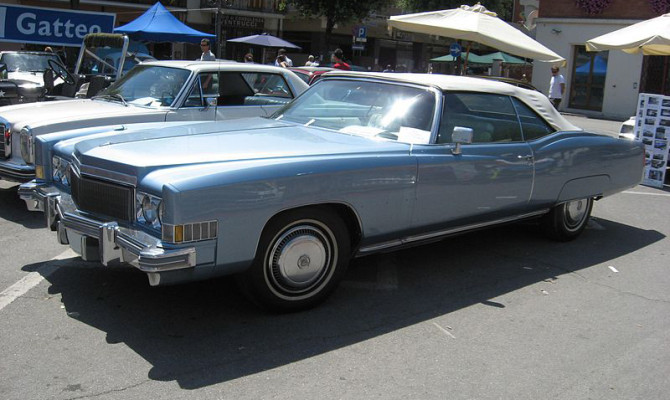
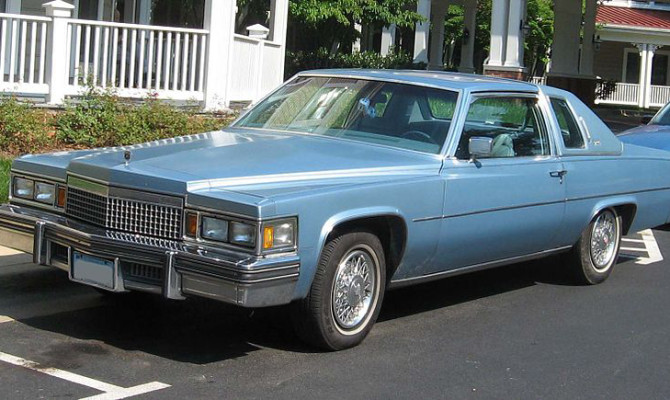
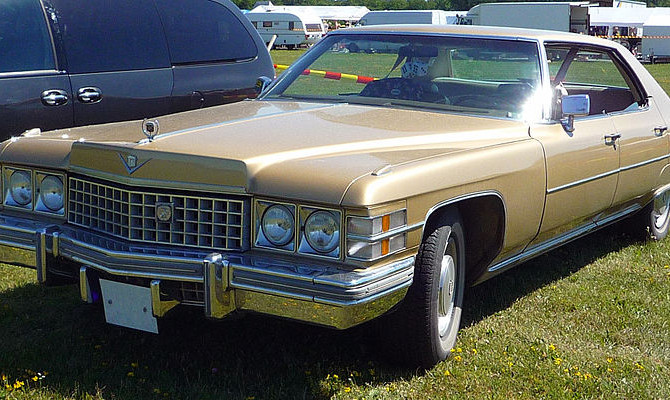
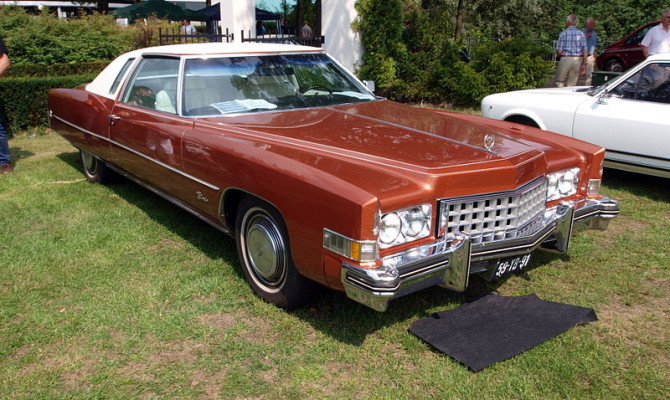
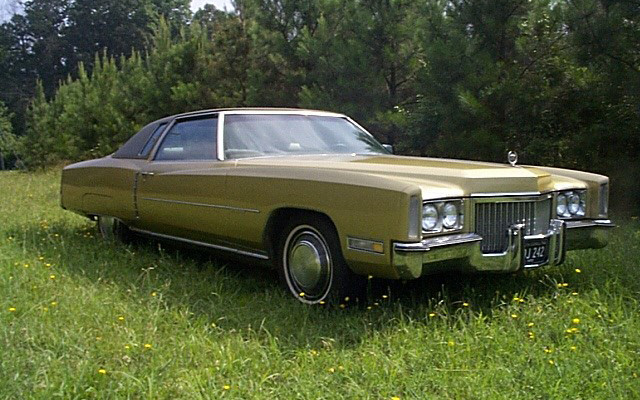
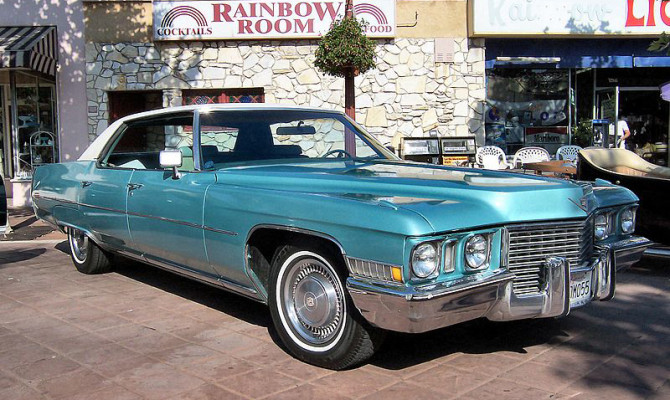
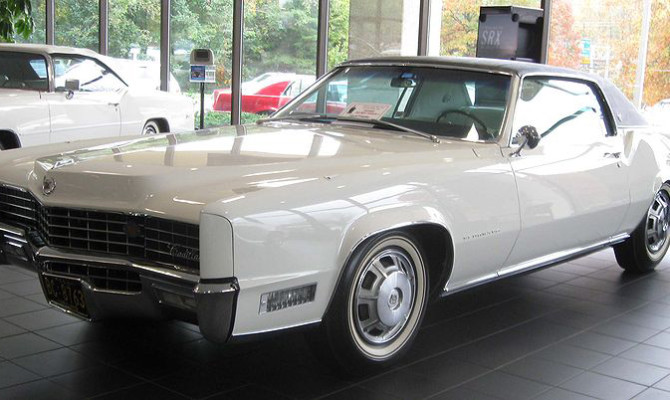
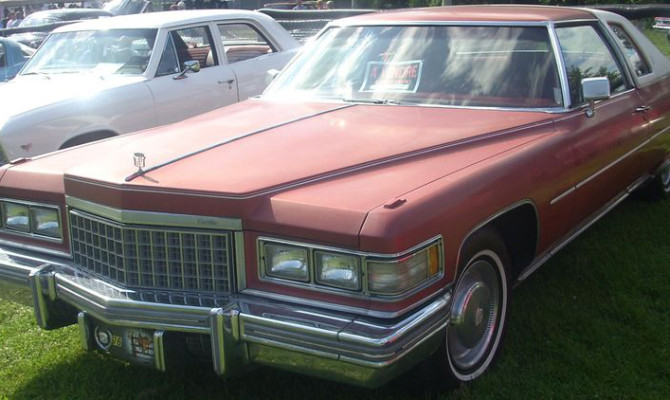
It’s well known that men of a certain age have an insatiable appetite for Martin Scorsese films.
Few films lend themselves to repeated viewings like the modern classics Goodfellas and Casino. As Gen-Xers (who make up much of the fanbase of 1990s Scorsese films) start to come into some real disposable income, a good number of them seem to have been inspired to collect the cars of their favorite unsavory screen characters – guys with names like Ace Rothstein, Nicky Santoro, Paul Cicero and Johnny Roastbeef. Call it the “Goodfellas Effect” if you want, but the Hagerty Price Guide shows the values of 1970s Cadillacs to be up 25 per cent in just the last three months. Here are four favorites:
The 1967 Eldorado was the second shoe that GM dropped after the magnificent 1966 Oldsmobile Toronado. Another big GM front-wheel-drive car with fantastic styling, many of its styling cues — particularly the knife-edged rear end treatment — still show up on today’s Cadillacs. Not surprisingly, ’67 Eldos are particularly menacing in black. Although Robert De Niro’s “Casino” character Sam “Ace” Rothstein was fond of newer Eldos, several of the gorgeous older cars show up in the background of the film.
1971-78 Cadillac Eldorado
The 1967-70 Eldo was a paragon of Bill Mitchell good taste. Let’s just say that the 1971-78 Eldo was a bit more Superfly than Don Draper. Still, with its massive 500-cubic-inch V-8, this was a car with more presence than Big Paul Castellano. They’re all over the film “Casino,” as they were in real life in 1970s Vegas. It’s hard not to start humming Tony Bennett’s “Rags to Riches” when you see one.
1971-76 Cadillac DeVille
At a tick over 19 feet long, the 1971-76 DeVille was one of the largest cars of the decade in exterior dimensions and the largest in terms of interior volume. Trunk size was off the charts — just the thing for “The Simpsons’” resident goodfella “Fat Tony” (voiced by the great Joe Mantegna) to transport his suspiciously body bag-shaped “yard trimmings.” The full-size DeVille was available with an equally massive 500-cubic-inch Cadillac V-8 (incidentally, that’s 0.6 cubic inches for each time the f-bomb was dropped in “Goodfellas”). Not surprisingly, many of these cars were assembled in North Jersey at the Linden Cadillac assembly plant, a stone’s throw from Fort Lee, where part of “Goodfellas” was filmed.
1977-86 Cadillac DeVille
While the DeVille was significantly downsized for 1977, it lost none of its swagger and appeal. The initial engine offered still displaced 425 cubic inches and somewhat amusingly, the “yard trimming” capacity went up when the trunk size actually increased. A Coupe de Ville (hot pink with a white vinyl top) led to the demise of Johnny Roastbeef and his wife in “Goodfellas” when Johnny ignored Robert De Niro character Jimmy Conway’s direction not to do anything flashy with the Lufthansa heist money. The window sticker was still on it when Johnny took his last ride
Rob Sass writes for Hagerty Insurance. Hagerty is the world’s leading specialist provider of classic car and boat insurance. Learn more at hagerty.ca.
“The Transformers edition is by far the best-recognized Camaro of all time and a sure-fire future collectible…”
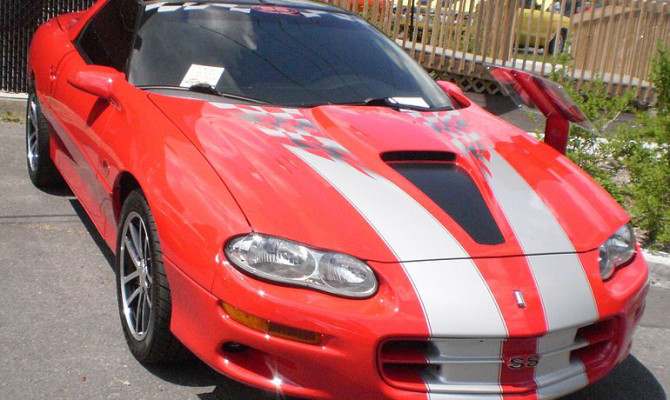
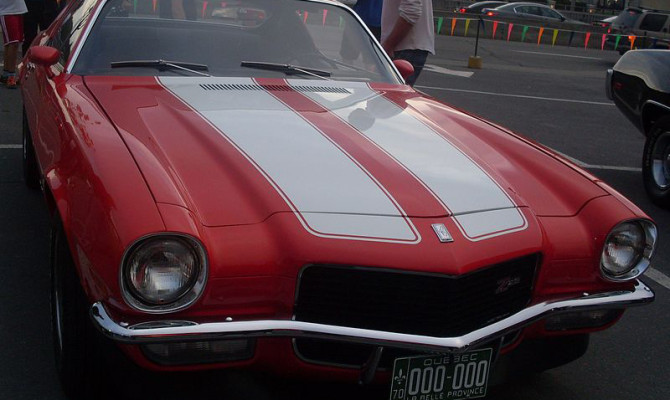
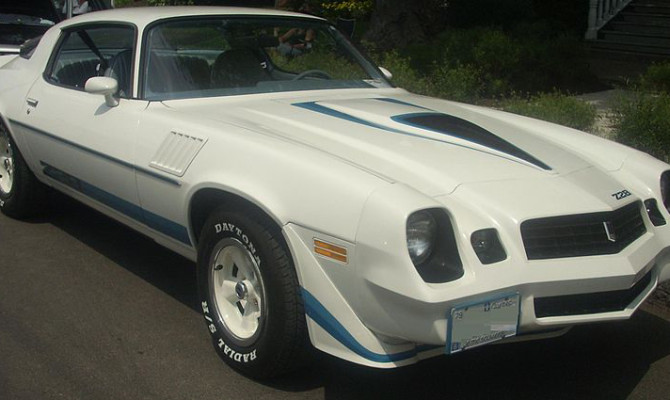
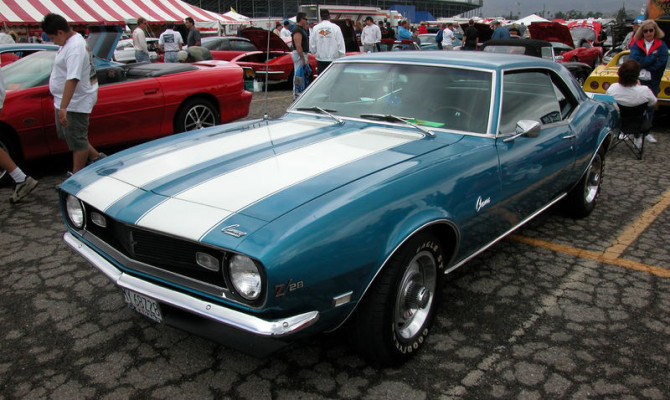
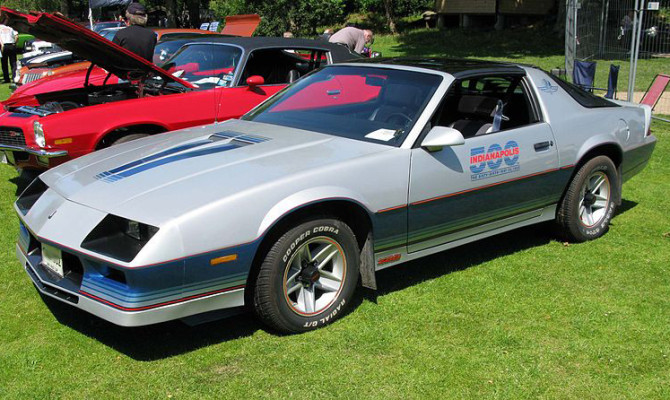
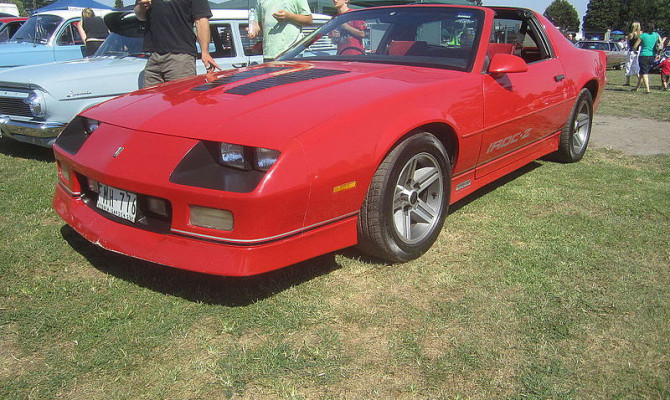
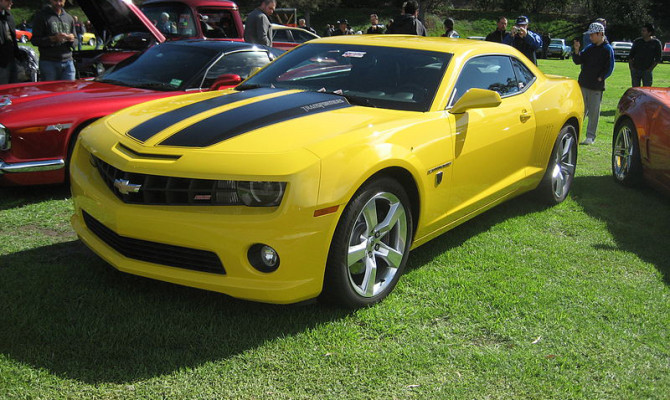
As we await the arrival of the sixth generation Chevy Camaro, let us look back at some favorite Camaros from each generation.
FIRST GENERATION
- 1967 Yenko Camaro – Don Yenko essentially ran a kick-ass speed shop out of his family’s decades-old Cannonsburg, Pa., Chevrolet dealership. Yenko replaced the car’s factory 396 V-8 with a Corvette L-72 427 that put out well over 400 gross horsepower. They went on to become among the most feared and (later) the most valuable muscle cars from the first golden age of automotive performance.
- 1968 Camaro Z/28 – If the big-block Yenko Camaro was a straight-line drag strip specialist, the Z/28 was the first-gen Camaro that you wanted to take on a road course. Its small-block 302-ci engine was essentially a 327 block with the crankshaft from the old 283 V-8. It made for one of the most entertaining and rev-happy pushrod V-8s of all time.
SECOND GENERATION
- 1970 Camaro Z/28 – The all-new second generation Camaro bowed for the 1970 model year complete with a fastback design and some styling cues borrowed from one of the best, the Ferrari 250 Short-Wheelbase Berlinetta of 1964 (Camaro would appropriate the name “Berlinetta” too, but we’re getting ahead of ourselves). The new car was an even better performer.
- 1979 Camaro Z/28 – The 1979 Z/28 looked fantastic with a new front spoiler and NACA duct hood. And while 175 hp doesn’t sound like a lot, the early 1970s change from SAE gross to net horsepower made it look worse than it was. The 1979 Z/28 remained a sharp handling and by-no-means slow car. Values have roughly doubled in the last five years.
THIRD GENERATION
- 1982 Camaro Z/28 Indy Pace Car – The ’82 pace car wasn’t about performance as much as looks. Nice examples are rare, but when they do show up, they are bargains, trading for well under $13,000.
- 1990 Camaro IROC- Z convertible – One of the biggest things to happen was the introduction of the first convertible since 1969 (courtesy of American Sunroof Corporation) just in time for the Camaro’s 20th anniversary. Fantastic examples still trade for under $20,000.
FOURTH GENERATION
- 1997 Camaro SS LT4 30th Anniversary SLP coupe – SLP Engineering (which stands for “Street Legal Performance”) followed the Yenko formula of 30 years earlier and grabbed one of the hottest Corvette engines (in this case the 1996 Grand Sport LT4). With wheel, tire and suspension upgrades to go with the balanced and blueprinted 330-hp LT4, the car cost about $18,000 more than the next hottest SS Camaro of the same model year. Buy one today for 50 grand.
- 2002 Camaro SS 35th Anniversary convertible – The F-body went out of production in 2002 (by then it was being produced only in GM’s Sainte-Thérèse, Quebec, plant) but at least it went out with a bang—the 325-hp SS went like stink.
FIFTH GENERATION
- 2010 Transformers Special Edition Camaro – Brilliantly announced at the 2009 San Diego Comic-Con, fewer than 2,000 were produced exclusively in Rally Yellow with black stripes and Autobot badges that were strategically placed. The Transformers edition is by far the best-recognized Camaro of all time and a sure-fire future collectible.
- 2014 Camaro Z/28 – Like the original Z/28 that cleaned up on road courses in the SCCA Trans Am series, the new Z/28 has track star written all over it. With extra-careful attention paid to light weight and aerodynamics, the car is able to put to good use on the track its huge Brembo brakes, Pirelli P Zero tires on 19” wheels and 500-hp, 7-litre V8- (that’s 427 cubic inches to Chevy big block fans).
Rob Sass is the vice-president of content for Hagerty Insurance. Hagerty is the world’s leading specialist provider of classic car and boat insurance. Learn more at hagerty.ca
“Low mileage first generation Miatas amazingly still trade for under 10 grand in its 25th year; it’s doubtful those prices will hold steady for its 50th.”
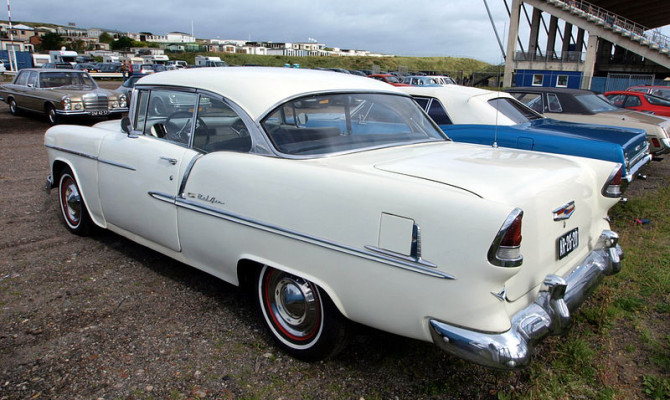
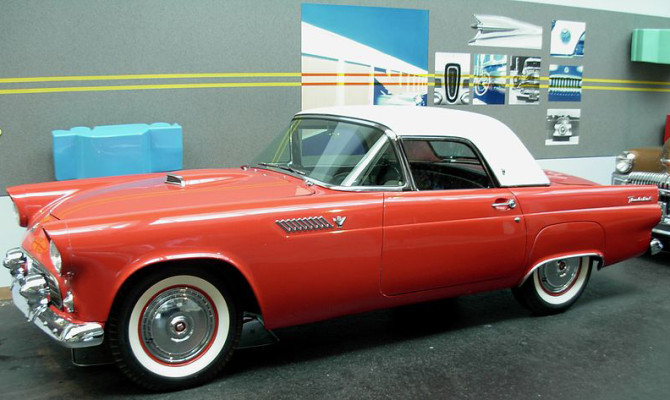
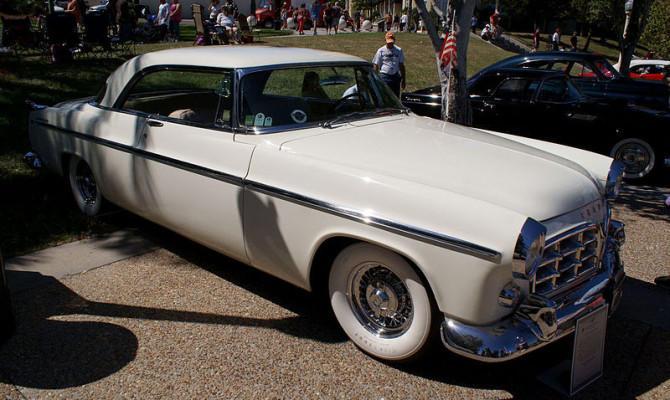
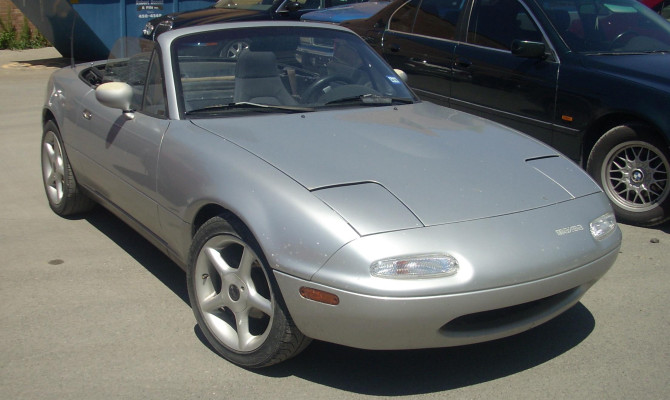
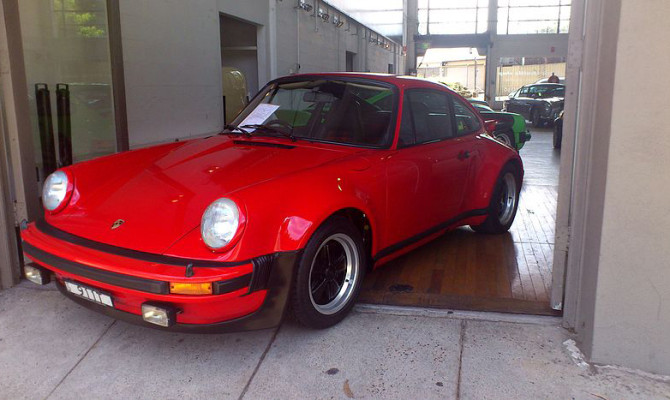
2015 follows 2014 and 2013 as particularly rich years for automotive milestones – here are five automotive anniversaries.
1955 Ford Thunderbird: The Corvette may have been the first post-war American two-seater from one of the Big Three, but it was the Thunderbird that was the most popular. In fact, after a disappointing first two model years, Chevy was considering killing the Corvette until the runaway popularity of the 1955 T-Bird made them reconsider. Made famous in George Lucas’ film, “American Graffiti,” the 1955-57 two-seater “baby birds” remain the most collectible T-Birds. Happy 60th.
1955 Chevrolet Bel Air: The 1955-57 Bel Air is probably the quintessential American collectible car, and it introduced another American milestone — the Chevy small-block V-8. The brainchild of Chevrolet chief engineer Ed Cole, the small block was relatively light, easy to service and expandable — from its original 265 cubic inches up to the ubiquitous 350 and beyond. The Bel Air was just the car to showcase the new overhead-valve V-8.
Mazda Miata: This one makes a lot of us feel old: The Miata is 25. Introduced in late 1989 as a 1990 model, for all intents and purposes, it was a British roadster that wouldn’t leak oil in your garage, or decide not to start below freezing or spontaneously set its dash on fire (not necessarily in that order). Mazda took all the good that we remember from British roadsters (they allegedly dissected several of one of the best, the Lotus Elan) — from sharp handling to a smooth short-throw gearbox — and added five speeds a modern twin-cam engine as well as a beautifully designed manual convertible top. Low mileage first generation Miatas amazingly still trade for under 10 grand in its 25th year; it’s doubtful those prices will hold steady for its 50th.
1955 Chrysler 300: The first of the “letter series” 300s was originally just known as the “300,” although it was succeeded by the 300B, 300C, etc. A gorgeous pillarless coupe that was really only built to go racing in NASCAR, it was powered by a 331-cubic-inch Hemi V-8 and was capable of nearly 130 mph, an amazing figure for the day. Just a few more than 1,700 were built, but it was the inspiration for the sensational sedan introduced by Chrysler in 2005. Happy 60th to the original 300 and happy 10th to the reboot.
1975 Porsche 911 Turbo: The mid-1970s were the dark ages of automotive performance, taking on the moniker “The Malaise Era,” which is known for low compression, emission controls and generally excruciating dullness. The Germans didn’t get that memo and, building on years of racing experience using exhaust-driven turbochargers, Porsche introduced the outlandish 911 Turbo Carrera, otherwise known by the internal project number “930.” Porsche used nearly as crude a setup as the turbo employed by the Corvair a decade earlier, and early 930s were very much an on-off proposition with turbo lag aplenty. But with 0-60 times of around five seconds, the 930 would put most muscle cars to shame. Many owners got caught by surprise by boost coming on while entering a corner — lift off the gas or brake and the rear-engine weight bias plus physics would take care of the rest. A fair number of dentists and pro athletes wrapped 930s around trees. The 40th anniversary has been preceded by a dramatic upswing in 930 prices.
Rob Sass is the vice-president of content for Hagerty Insurance. Hagerty is the world’s leading specialist provider of classic car and boat insurance. Learn more at hagerty.ca.
“The notion that a James Bond villain with unlimited resources would build a flying car out of an AMC Matador is simply unfathomable.”
Casting directors, wardrobe designers and set designers are always recognized for their work in feature films.
However, car-casting people are often the real unsung casting heroes. What would “Bullitt” have been without the Highland Green 1968 Mustang 390 fastback? Just as important are the bit-players, the oddball character actors of the movie car world. These are the Jack Elams, Crispin Glovers and the Peter Lorres of movie cars:
1967 Citroen 2CV — “American Graffiti” The Citroen 2CV is a truly strange car. Perhaps the most intentionally minimalist automobile ever to see production, even third-world motorists today would balk at its hammock-like seats and tin can-like appearance. Future writer and pacifist Curt Henderson (played by Richard Dreyfuss), drove this two-cylinder French peasant’s car throughout the film. Strangely, the producers used a 1967 model in spite of the fact that the film was famously set in 1962. A forgivable oversight given the overall excellence of the film and the fact that one 2CV (produced from 1948-90) looks pretty much like the next.
1953 Messerschmitt KR175 — “The Addams Family” The Messerschmitt KR175 was the product of a company that less than 10 years previous, had been building fighter planes for the Third Reich, including the first jet-powered interceptor. From jet fighters to amusing microcars! This bubble-topped three-wheeler was the ride of the chattering, sentient hairball named Cousin It in the great 1991 re-boot of the Addams Family.
1987 Yugo GV — “Dragnet” After Tom Hanks and Dan Aykroyd lose two previous police-issued vehicles, this was the only car the department would let them have. According to Aykroyd (who did a wicked Jack Webb impersonation), it had been donated to the LAPD by the government of Yugoslavia as a test vehicle “and reflected the cutting edge of Serbo-Croatian technology.” As an aside, the U.S. bombing campaign during the Balkan Wars finally put an end to the Yugo when the factory was levelled. Opinions differ as to the magnitude of this loss to the automotive world.
1974 AMC Matador Coupe — “Man with the Golden Gun” It’s difficult to say what’s stranger, the car or the context. The notion that a James Bond villain with unlimited resources would build a flying car out of an AMC Matador is simply unfathomable in any world other than that of product placement. We like the Matador coupe for its sheer oddness, but the fish-out-of-water aspect of it in a big-budget Bond film is what puts it over the top.
1973 Corvorado — “Live and Let Die” Driven by a Mr. Big henchman (aptly named “Whispers,”) this was a C3 Corvette that was for no apparent reason, customized with Cadillac Eldorado body panels (hence the name Corvorado) by one Les Dunham of Boonton, New Jersey. It pre-dated the Cadillac XLR by some 30 years. The car also made an appearance in the movie “Superfly.”
Rob Sass is the vice-president of content for Hagerty Insurance. Hagerty is the world’s leading specialist provider of classic car and boat insurance. Learn more at hagerty.ca.
“Chevrolet certainly had an interesting way of celebrating the Camaro’s birthday – they killed it at age thirty-five.”
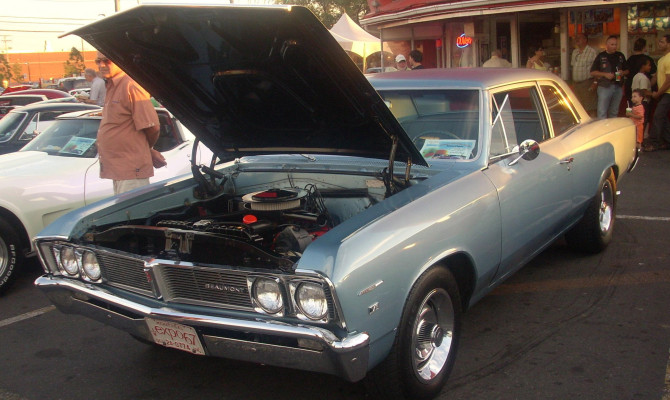
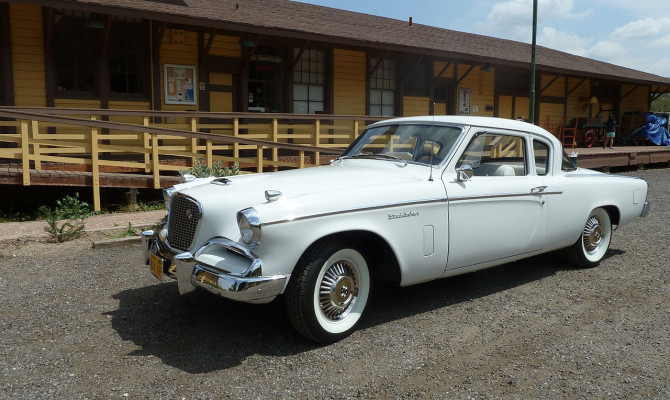
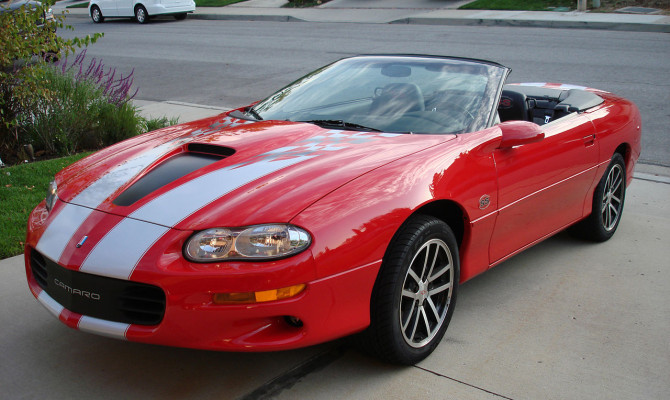
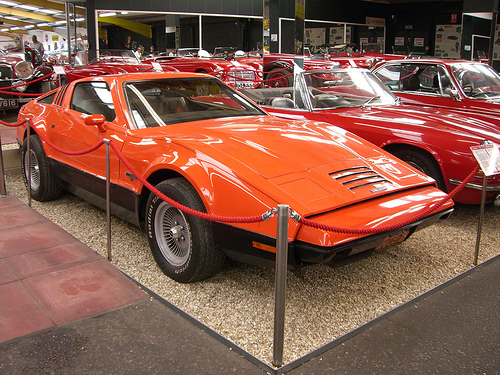
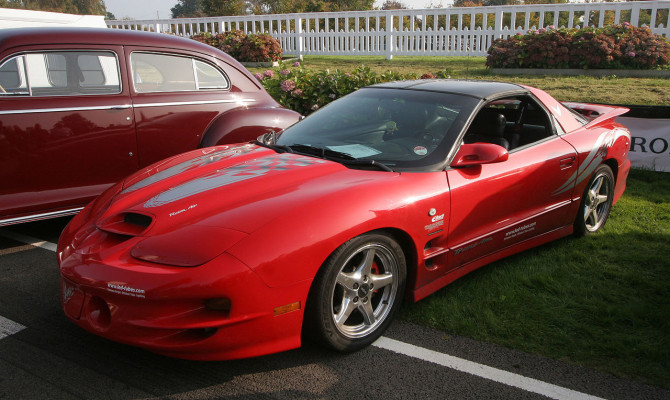
Canada has an automotive heritage every bit as rich as that of the United States. Some extraordinarily interesting collectible cars have been produced here over the years.
These are five favourites:
- 1965 Acadian Beaumont Sport Deluxe – Similar to the American Chevrolet Chevelle, the Beaumont Sport Deluxe followed the original muscle car formula of the Pontiac GTO by stuffing the most powerful engine readily available into the smallest body. Only twenty-three were built with the potent L79 327 cubic inch, 350 hp engine option. All were built in GM’s Oshawa, ON plant.
- 1974-75 Bricklin SV-1 – The Bricklin was a gullwing door sports car that was built in what was then a relatively under-employed part of New Brunswick. Generous tax-incentives were paid out of the provincial coffers to get Malcolm Bricklin to locate his factory there. If it all sounds familiar, it should, this was essentially the DeLorean story played out seven years earlier in Canada rather than Northern Ireland. Sadly, it ended much the same way with not even two years of production of the Bricklin “safety sports car” before the whole operation folded up owing the government of New Brunswick over $20 million. Power came from either Ford or AMC V8s.
- 1956 Studebaker Flight Hawk – The Hawk was a particularly fine-looking coupe that was a derivative of the 1953 Robert Bourke/Raymond Loewy Starliner coupe. Oddly, only the 1956 model year base six-cylinder Flight Hawk coupes were built in Canada in Studebaker’s Hamilton, ON plant where the last Studebakers rolled off the line just ten years later in 1966.
- 2002 Pontiac Firebird Trans Am WS6 – Most Americans are blissfully unaware that William Shatner and Michael J. Fox are actually Canadian. They’d likely be equally surprised to find out that one of the most quintessentially American muscle cars was actually Canadian. The last (and some argue the best) Pontiac Trans Am with the WS6 package was assembled alongside its F-body cousin the Chevrolet Camaro in Sainte-Thérèse, Quebec where production had shifted in 1993.
- 2002 Chevrolet Camaro SS 35th Anniversary – Chevrolet certainly had an interesting way of celebrating the Camaro’s birthday – they killed it at age thirty-five. The SS shared the Corvette-derived LS6 powerplant with the above-mentioned Trans Am WS6. In its convertible form, it is quite collectible. After F-body production ended in 2002, GM closed the plant, which was the last GM plant operating outside of Ontario.
Rob Sass is the vice-president of content for Hagerty Insurance. Hagerty is the world’s leading specialist provider of classic car and boat insurance. Learn more at hagerty.ca.
“Comparatively few celebs over the years have actually been obsessive enough in their enthusiasm for cars and motorsports to be considered accomplished drivers or lifelong gearheads…”
It’s no surprise that celebrities gravitate to cool cars.
For the vast majority of them though, cars are just fashion accessories. Comparatively few celebs over the years have actually been obsessive enough in their enthusiasm for cars and motorsports to be considered accomplished drivers or lifelong gearheads. Here are six with real cred:
Jay Leno is probably one of the best-known celebrity gearheads. His “Jay Leno’s Garage” website is well trafficked and his videos garner thousands of views on YouTube. Leno is no poser; he’s a consummate car guy and he has a very independent collecting philosophy – he’s out to impress no one. He buys what he likes and what he finds technically interesting, and he even has been known to turn a wrench or two.
The King of Cool, the late Steve McQueen owned some of the greatest collectible cars of all time, from a one-of-16-built Jaguar XK SS to a Ferrari 250 GT Lusso. Whenever any of the movie actor’s former cars hit the auction circuit, they sell for several multiples of what a non-McQueen car could expect to garner. Hell, even the guy’s sunglasses once fetched $70,000 at auction.
Most people remember the late James Garner as the laidback private eye Jim Rockford who drove an equally cool Pontiac Firebird and devised the trademark Jim Rockford “J turn.” The owner of numerous classic cars over the years, Garner starred in the 1965 John Frankenheimer racing epic Grand Prix, where the real drivers serving as technical advisers told him that he had serious talent. As a team owner in the 1960s, his cars had frequent successes included taking five of the first seven places in the brutal Baja 500 race.
As a New Yorker, it seems odd that comedian Jerry Seinfeld would turn out to be one of Hollywood’s most accomplished gearheads. Conventional wisdom holds that New Yorkers don’t own cars, and to the extent that they interact with them, they’re yellow and have a light on the roof. But Seinfeld has over the years become one of the world’s premier Porsche collectors. The exact extent of his collection is not widely known, but it is said to include some of the earliest Porsches from the late 1940s as well as some of Porsche’s most famous racing cars. Not a subscriber to the trailer and velvet ropes philosophy of collecting, Seinfeld actually drives most of his cars on a regular basis.
Grey’s Anatomy actor Patrick Dempsey is a fixture at many of the big collector car auctions, particularly Barrett-Jackson’s Scottsdale sale in January, and he maintains a serious collection of vintage cars. But Dempsey’s biggest footprint is in the motorsports world. He’s competed at serious venues like Le Mans and Daytona and in the Baja 1000. At this point, it’s difficult to say whether Dempsey is an actor who races cars or a racer who acts.
Paul Newman was no stranger to cool street cars. We loved him in the hockey epic Slapshot in a Gold 1970 Pontiac GTO and in the Porsche Speedster from Harper. Out of films and on the street, he tended to be more low-key though, famously taking to the streets of Westport, Conn., in an innocuous-looking Volvo wagon that hid a fire-breathing GM V-8. But it was on the race track that Newman earned his gearhead cred – successful showings at The 24 Hours of Le Mans, Daytona and numerous races in the SCCA Trans Am series were among his major accomplishments. Respect for him as a driver was universal and he was posthumously inducted into the SCCA Hall of Fame in 2009.
Rob Sass is the vice-president of content for Hagerty Insurance. Hagerty is the world’s leading specialist provider of classic car and boat insurance. Learn more at hagerty.ca
‘Twas the week before New Year’s, and all through the car
Components were groaning, it couldn’t drive far.
The tow straps were hung by the work bench with care,
In hopes that new parts soon would be there.
The poor old engine had ran out of puff
With thick smoke billowing, it needed more than a buff.
The transmission was leaking, the engine misfired
Leaving me weeping, from these repairs I would tire.
When out on the lawn there arose a low rumble
So smoothly it sounded.
No roughness, no stumble.
“I envy that sound,” I said with a mumble.
Just as I’d feared, prognosis: not good.
When a deep voice behind me said “You did all you could.”
As you can imagine, I turned mighty quick,
And there by my work bench, stood my old friend Nick!
A bundle of car parts strapped to his back,
He went to my work bench, and opened the sack.
He spoke not a word, but went straight to my ride,
And fixed it with love, horsepower and pride!
He started the engine and said with a smile,
“This car was worn out, it has been a while!
Enjoy your ride, all shiny and new,
For it’s not very often that car dreams come true!”
Then his big block exploded with Flowmaster sound,
Nick dropped the clutch, the tires shredded the ground.
I heard him exclaim, as he blasted from sight,
“Merry Cruisemas to all, and to all a good night!”
Twas the Night before Cruisemas” was created by Hagerty Insurance. Hagerty is the world’s leading specialist provider of classic car and boat insurance. Learn more at hagerty.ca
The classic car world is possibly one of the most opinionated collecting pursuits known to man, and nearly everyone seems to have an opinion on relative values and desirability.
Each car on the list has at one time or another been deemed by “experts” to be hopeless as a collectible and each has one thing in common – they’ve skyrocketed in value.
1956-58 Studebaker Golden Hawk
Poor Studebaker, the cars of the ill-fated favorite son of South Bend, Ind., never seemed to get the same love from collectors as the cars of the Big Three. But they may be getting the last laugh. (more…)
The classic car market has been on a tear for several years now. Some cars that you would never imagine breaking the five grand barrier have done so, often handily, with the best examples of some of the worst cars ever regularly breaking the bank on eBay. Here are some of our favourites:
- 1990 Yugo GV ($9,100) – Nobody restores a Yugo, right? Ummmm… wrong. This one was restored to better-than-new condition with great paint and interior. When new, these communist-made transportation appliances with funny-smelling plastic interiors and negative numbers in every relevant safety measure sold for about three grand. This one brought almost three times that on eBay in August 2012.
- 1985 Trabant convertible ($18,900) – Yet another product of European communism, the smoky, two-stroke Trabant was made from a resin-impregnated, cloth-based composite material that was rumored to be based on discarded East German military uniforms. A sign of the backwardness of the former Soviet bloc, the juxtaposition of Trabants against 7-series BMWs after the wall came down was particularly comical. While it was an unusual “beach car” convertible variant, this was huge money for a terrible car. Sold on eBay in October 2012.
- 1979 AMC Pacer ($12,433) – Pacers had a brief moment in the collector car sun after the movie “Wayne’s World,” along with other “nerd cars” like the AMC Gremlin. This incredibly clean example with just 38,083 miles sold on eBay Motors in March 2014 for the huge sum of $12,433.
- 1979 Ford Pinto ($4,161) – Saying that Pintos are “da bomb” is a terrible joke that we seem to have repeated. Known mainly today for their fuel tank positioning, which gave them explosive characteristics in rear-end collisions, they really weren’t bad to drive. But the attending bad publicity ensured that, along with Chevy’s ill-fated Vega, American compacts failed to stem the tide of Japanese imports. This disco-era Pinto wagon, complete with a factory porthole window, was just the thing for someone with a case of “Boogie Nights” nostalgia. Sold in November 2012 on eBay Motors.
Recent Comments
- { Enjoyed your Forest of Bowland in the BMW X5M, particularly the photo of the BMW in front of the main part of Stonyhurst College where... }
- { Bantam designed the Jeep, not Willy's or Ford. The American military gave the original Bantam prototype to Willys and Ford to copy. There is plenty... }
- { All Escalades come with a 6.2-lilter V8 engine that produces 420 horsepower. A six-speed automatic is the only transmission offered and drives the rear wheels.... }
- { Alexandra is an excellent journalist. }
Popular Posts
- Journey to a ‘Sparkling’ Luxury Okanagan Resort “Four lucky readers will put a Dodge Journey’s weekend-...
- The Need For Speed: Hike Those Highway Limits More than half of those polled believe the province sho...
- Drives-U-Crazy… Erratic drivers. An early morning drive from Kelowna to Vancouver is nor...
- Readers Respond: The Pros and Cons of Increasing B.C. Speed Limits Increasing the speed limits will only increase risk to...
- Honda CR-V Review: The Compact Crossover To Get Things Done The CRV is a very stylish and aerodynamic crossover veh...



